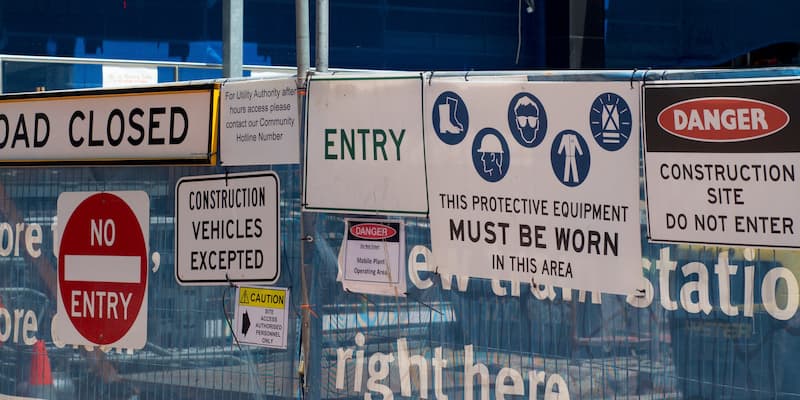
By Hans Stacey 03/05/2022
Under: Site Set Up / Team Welfare4 Easy Strategies for Better Safety Communication in Construction
With a good communication strategy, construction companies can reduce accidents, improve worker well-being and decrease costs associated with injury and illness - estimated to be a substantial £16.2 billion industry wide in 2022/23.
Reduce accidents and work-related illnesses on your construction site with these quick tips to improve health and safety communication:
1) Display Key Info Strategically
The Management of Health and Safety at Work Regulations 1999 require every employer to provide employees with information on potential risks, protective measures, emergency procedures and contact information for those with key roles in health and safety management. If you have traffic on the site then traffic signs must also be erected that conform with the Road Traffic Act 1984.
Think carefully about where health and safety information is displayed. A site entrance board is a good way to display key information, legal requirements and safety contact details. Hazard specific signs should be placed in a visible location by the hazard in question. More general signs or managements tools, such as dry wipe boards, can be placed in communal spaces such as canteens or meeting induction areas. Key information should be clearly displayed and easy to find. Signs or posters designed to remind workers about general health and safety ideas could be moved from time to time as new placements catch the eye of workers rather than becoming ignored as part of the furniture.
Use attention grabbing safety posters or try adding your logo to generic signs to make them more visible to workers as well as professional and brand focussed.
Shop signage.
2) Ramp Up Staff Inductions
Staff inductions are a key way to introduce new team members to important health and safety information. Try making inductions as engaging and memorable as possible. How about introducing a game like element to your training? New starters could take part in a Safety quiz to test their understanding - with a company leader board displayed on site to encourage a bit of competitive spirit.
An excellent training tool to enhance your site induction is a Site Training Flipchart, supplied complete with instructor notes, safety training register and helmet induction stickers.
3) Engage Your Workforce
Team members are more likely to stay switched on to health and safety if you keep them involved in the process. Communication should be a two way street: safety updates via email or bulletin boards are great, but workers should have a way to make their voices heard too. Make use of the latest technology and social media to get team members involved: how about a Whatsapp or Facebook group for team members to communication health and safety issues. Workers could also use smart phones to take pictures of health and safety concerns that can instantly be shared with managers. Feed back to employees how their input has had an impact through a We Are Listening Board.
Again, using gamification techniques can help motivate people to get involved in health and safety - introduce health and safety awards and accolades such a a monthly 'safety superhero' with prizes or incentives.
4) Keep Safety Signs Gleaming
Worn and tatty signs can lose their impact and also communicate to workers and the public that safety isn't top priority. Invest in heigh quality safety signs and replace them if they become worn or damaged. For initial set ups, a site starter kit can be an economical way to cover your main signage needs.
Have you found innvative ways to improve health and safety communication in the workplace? Share your stories in the comments section below.

.jpg)
